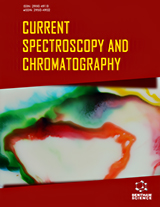Abstract
Thin metal layers are widely utilized in a number of modern applications in electronics, optics, chemistry and many other applications. At present the thin layers of metals serve in applications spanning from simple electrodes to surface plasmon resonance (SPR) or giant magnetoresistance (GMR) based sensors [1, 2]. Thin films allow monitoring redox processes in the vicinity of electrodes, adsorption/desorption equilibria of ions, organic compounds, gases, and more recently also interactions of large organic macromolecules such as proteins or DNA. In a previous review we have covered applications of thin films in biosensing regardless of the measured physical change [3]. Measurement of basic electric properties (current, voltage, resistance) is simple and precise with large dynamic range. Since the related equipment is simple and inexpensive; such sensors might be very attractive for many applications in chemistry, environmental sciences or medicine. In this work, we shall discuss the potential of metal layers for future applications in resistance based chemical sensing.
Keywords: Chemiresistor, thin metal film, voltohmmetric sensing, gas sensing.
Current Analytical Chemistry
Title:Thin Metal Films in Resistivity-based Chemical Sensing
Volume: 9 Issue: 4
Author(s): Pavel Podesva and Frantisek Foret
Affiliation:
Keywords: Chemiresistor, thin metal film, voltohmmetric sensing, gas sensing.
Abstract: Thin metal layers are widely utilized in a number of modern applications in electronics, optics, chemistry and many other applications. At present the thin layers of metals serve in applications spanning from simple electrodes to surface plasmon resonance (SPR) or giant magnetoresistance (GMR) based sensors [1, 2]. Thin films allow monitoring redox processes in the vicinity of electrodes, adsorption/desorption equilibria of ions, organic compounds, gases, and more recently also interactions of large organic macromolecules such as proteins or DNA. In a previous review we have covered applications of thin films in biosensing regardless of the measured physical change [3]. Measurement of basic electric properties (current, voltage, resistance) is simple and precise with large dynamic range. Since the related equipment is simple and inexpensive; such sensors might be very attractive for many applications in chemistry, environmental sciences or medicine. In this work, we shall discuss the potential of metal layers for future applications in resistance based chemical sensing.
Export Options
About this article
Cite this article as:
Podesva Pavel and Foret Frantisek, Thin Metal Films in Resistivity-based Chemical Sensing, Current Analytical Chemistry 2013; 9 (4) . https://dx.doi.org/10.2174/1573411011309040015
| DOI https://dx.doi.org/10.2174/1573411011309040015 |
Print ISSN 1573-4110 |
| Publisher Name Bentham Science Publisher |
Online ISSN 1875-6727 |
 11
11
- Author Guidelines
- Bentham Author Support Services (BASS)
- Graphical Abstracts
- Fabricating and Stating False Information
- Research Misconduct
- Post Publication Discussions and Corrections
- Publishing Ethics and Rectitude
- Increase Visibility of Your Article
- Archiving Policies
- Peer Review Workflow
- Order Your Article Before Print
- Promote Your Article
- Manuscript Transfer Facility
- Editorial Policies
- Allegations from Whistleblowers
- Announcements
Related Articles
-
Recent Developments Towards the Synthesis of Varitriol: An Antitumour Agent from Marine Derived Fungus Emericella Variecolor
Current Organic Synthesis Drug Delivery Systems for Photodynamic Therapy
Recent Patents on Drug Delivery & Formulation Molecular Dynamics in Esophageal Adenocarcinoma: Who’s in Control?
Current Cancer Drug Targets Triple Negative Breast Cancer: A Tale of Two Decades
Anti-Cancer Agents in Medicinal Chemistry Predicting Drug Efficacy Using Integrative Models for Chronic Respiratory Diseases
Inflammation & Allergy - Drug Targets (Discontinued) Recent Advances in the Development of Novel Therapeutics Targeting Dendritic Cells
Recent Patents on Endocrine, Metabolic & Immune Drug Discovery (Discontinued) Current Opinion in the Pharmaceutical Management of Irritable and Inflammatory Bowel Diseases: Role of ATP
Recent Patents on Endocrine, Metabolic & Immune Drug Discovery (Discontinued) Synthesis of Isoxazole Moiety Containing Thieno[2,3-d]pyrimidine Derivatives and Preliminarily in vitro Anticancer Activity (Part II)
Anti-Cancer Agents in Medicinal Chemistry The Radiosensitizing Effect of Olanzapine as an Antipsychotic Medication on Glioblastoma Cell
Current Radiopharmaceuticals Aptamer-Mediated Cancer Gene Therapy
Current Gene Therapy Sanguinarine: A Double-Edged Sword of Anticancer and Carcinogenesis and Its Future Application Prospect
Anti-Cancer Agents in Medicinal Chemistry Tumor Protein p63/microRNA Network in Epithelial Cancer Cells
Current Genomics Is Notch Signaling a Specific Target in Hepatocellular Carcinoma?
Anti-Cancer Agents in Medicinal Chemistry Bombesin-like Peptides: Candidates as Diagnostic and Therapeutic Tools
Current Pharmaceutical Design Pharmacological Aspects of the Enzastaurin-Pemetrexed Combination in Non-Small Cell Lung Cancer (NSCLC)
Current Drug Targets Application of CMB Model to PM10 Data Collected in a Site of South Italy: Results and Comparison with APCS Model
Current Analytical Chemistry Redox Chemistry of Green Tea Polyphenols: Therapeutic Benefits in Neurodegenerative Diseases
Mini-Reviews in Medicinal Chemistry Modulation of Energy Intake and Expenditure Due to Habitual Physical Exercise
Current Pharmaceutical Design Treatment of Elderly Patients Affected by Lung Cancer: Why to Treat, when to Treat and what we Know
Anti-Cancer Agents in Medicinal Chemistry Targeting ErbB Receptors in High-Grade Glioma
Current Pharmaceutical Design


























